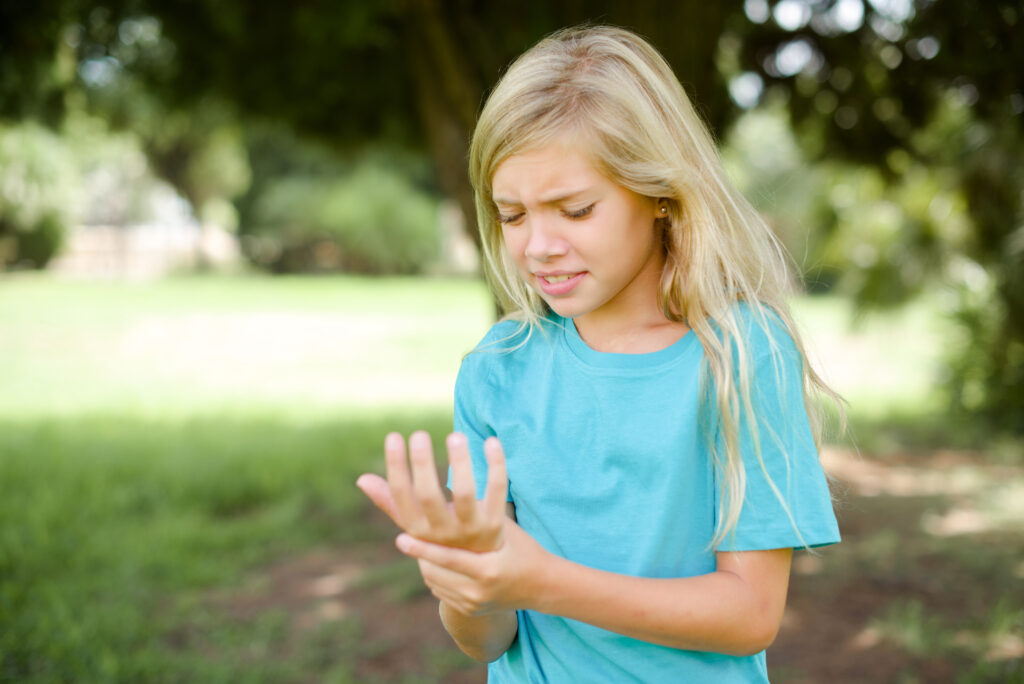What is Juvenile Idiopathic Arthritis?
Arthritis is a general term used to describe inflammation and swelling of a joint lining. When this occurs, the joint may become painful, swollen, warm, or show redness. There are over 100 different forms of arthritis. Depending on the type, it can be extremely painful and affect everyday activities or go relatively unnoticed and be easily managed for years. When arthritis occurs for a period lasting more than six weeks in a child, it may be a condition known as Juvenile Idiopathic Arthritis (JIA).
When we think of children and teens, one of the first things that comes to mind is the freedom of play – running, leaping, climbing — all things that are second nature to young people. Unfortunately, for those with JIA, such activities are painful and sometimes impossible.
JIA is the most common type of chronic arthritis in kids and teens. Children are usually diagnosed with this disease between the ages of six months and 16 years. JIA and other pediatric rheumatic diseases affect nearly one in every 1,000 children. It typically causes joint pain and joint inflammation in the hands, knees, ankles, elbows, and/or wrists. But, it may affect other body parts too. JIA broadly refers to several different chronic disorders involving the inflammation of joints.
JIA is considered an autoimmune or autoinflammatory disease. Most rheumatic diseases are autoimmune disorders, which means the body’s immune system mistakenly attacks healthy cells and tissues. With JIA, the immune system specifically targets the lining of the joints, creating inflammation.
Although the cause of JIA is unknown, research suggests genetics can be a factor. A small percentage of cases runs in families, and the probability of developing JIA is 12 times more likely if a sibling has the disease.
Symptoms of Juvenile Idiopathic Arthritis
There are six types of JIA with certain symptoms specific to each one. It’s possible for a child to be diagnosed with one type and then experience another at a later stage. The knees, hands, and feet are usually the most affected, and symptoms are typically worse in the morning or after taking a nap and resolve over the course of the day. Swollen joints often become warm to the touch and moving affected joints may worsen the pain. This can make children reluctant to walk or cause them to limp.
Most children with JIA go through periods where their symptoms improve or go away altogether, and times when they return and worsen. Age is also a factor. Younger children are more likely to be affected in their big joints — the knees and ankles — while older children and teens are more likely to be affected in small joints such as fingers, hands, and wrists.
The most common symptoms are:
- Joint pain
- Swelling or stiffness
- High fever that comes and goes for about two weeks, spikes later in the day, and then rapidly returns to normal
- Rash, red spots or salmon-colored patches with clear centers on the trunk upper legs, and arms
- Lymph node swelling
- Red, swollen, tender, or warm joints
- Fatigue
- Blurry vision or dry, gritty eyes as a result of inflammation
- Loss of appetite
- Growth and developmental problems
Discrete symptoms:
- Struggles with isolation
- Loneliness
- Being misunderstood
- Lack of interest
How to Diagnose Juvenile Idiopathic Arthritis
JIA can be diagnosed and treated by a pediatric rheumatologist or a pediatric orthopedist based on the child’s symptoms. There is no single test to diagnose the disorder.
If the joint doesn’t move well, meaning there is inflammation, bloodwork, and imaging studies may be necessary. Bloodwork can help to distinguish the type of JIA, and imaging studies such as MRIs and bone scans can show damage to the bones and joints.
Treatments for Juvenile Idiopathic Arthritis
Although it may be tempting for children with JIA to pull the blankets over their heads and stay in bed, immobility can make things worse. Gentle movement can actually help to give your child some relief. Like a good stretch to warm up before exercising, gentle massaging and stretching can help soothe the muscles and ligaments around sore joints. Exercise can help keep full motion in the joints and strengthen the muscles and bones.
Children with JIA are often prescribed medications such as anti-inflammatories and sometimes more potent treatments like disease-modifying antirheumatic drugs (DMARDs) or biologics to limit the symptoms as well as slow the progression. Because of advances in medicine, therapies can result in permanent remission or reduce/eliminate symptoms. In rare cases, surgery can offer pain relief and address deformity. A physical therapist can help plan an effective exercise program to provide a child with more functionality and a better quality of life.



